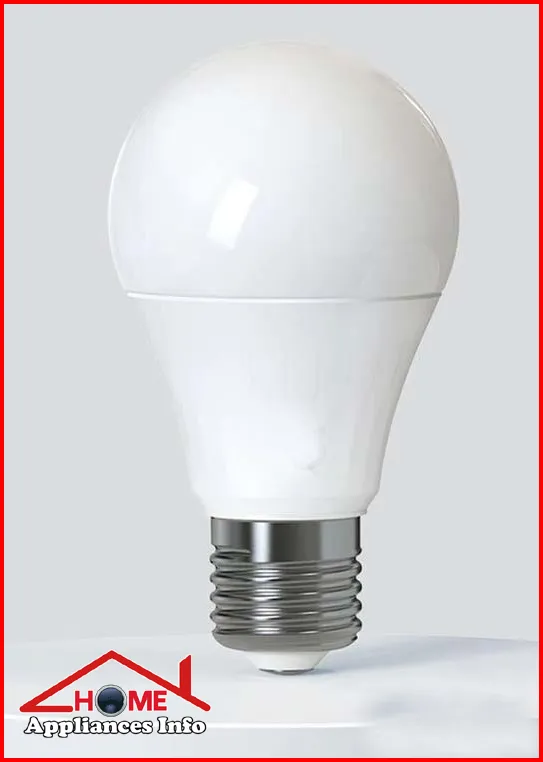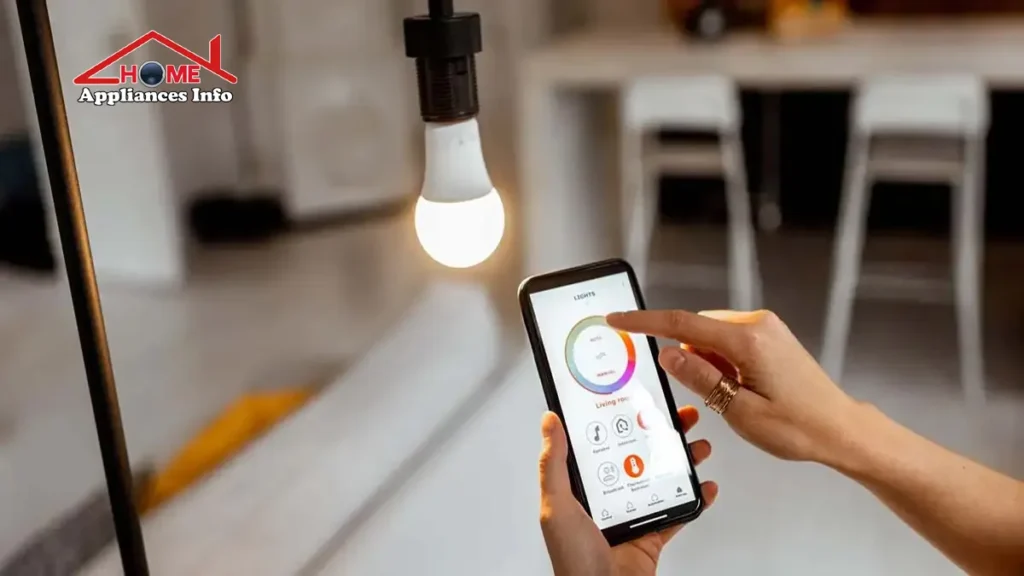If you have ever wished your lights could adjust themselves to your mood, sleep, or schedule, you are not alone. Many people now see lighting as part of their overall health routine. A smart light bulb is one of the simplest tools to start shaping a healthier home environment.
These connected bulbs can dim, change color, and turn on and off automatically. They help support better sleep, reduce eye strain, and create calming spaces. Understanding what they are and how they work makes it easier to use them in a safe, health‑focused way.
1. What is a smart light bulb?
A smart light bulb is an LED light that connects to your phone, voice assistant, or smart home system. You control it through an app, voice commands, or automated schedules, rather than only with a wall switch.
Most smart bulbs offer features such as:
- Dimming without a separate dimmer switch
- Adjustable color temperature, from warm to cool white
- Full color options in some models
- Timers and schedules
- Integration with routines, scenes, and health‑focused settings
Unlike old incandescent bulbs, smart bulbs are almost always LEDs. This means they:
- Use far less energy
- Produce less heat
- Last many years when used normally
From a health perspective, the big advantage is control. You can match your lighting to your body’s natural rhythms, your work demands, and your relaxation needs.

2. How do smart light bulbs work?
To answer “How do smart light bulbs work?” it helps to picture several parts working together.
Most smart bulbs include:
- An LED light source
- A small computer chip
- Wireless communication, such as Wi‑Fi, Bluetooth, or Zigbee
- Power electronics inside the bulb
Here is how it all fits together:
- You send a command.
You tap an app, speak to a voice assistant, or trigger an automated routine. - The command travels to the bulb.
- If the bulb uses Wi‑Fi, the message goes through your router.
- If it uses Bluetooth, your phone sends it directly.
- If it uses Zigbee or another protocol, a hub relays the signal.
- The bulb’s chip processes the command.
It decides how bright the LEDs should be and what color or color temperature to show. - The LEDs adjust.
The electronics increase or reduce power to the LEDs. You see the light change almost instantly.
Some bulbs connect to cloud services as well. This allows you to control them from anywhere, not just when you are home. For health uses, local control is usually enough, but remote access can help with routines and security.
3. Smart lighting and your body clock
Light is one of the strongest signals to your circadian rhythm. This internal clock influences sleep, energy, hormone release, and even digestion.
Smart bulbs give you control over three important light qualities:
- Brightness
- Color temperature
- Timing
Warm, dim light in the evening can signal your brain that it is time to wind down. Cooler, brighter light in the morning helps you feel more alert and awake.
A few health‑focused examples:
- Morning: Bright, cool white light in the kitchen while you eat breakfast.
- Late afternoon: Softer, neutral light near your desk to reduce strain as you finish work.
- Evening: Warm, dim light in the bedroom during your wind‑down routine.
Many systems offer presets like “Relax,” “Read,” or “Energize.” These typically adjust brightness and color temperature to match typical needs for each activity.
Real‑life example
Someone who struggles to wake up in winter can set their bulbs to brighten gradually. This “sunrise” effect can feel gentler than a loud alarm and support a steadier mood.
4. Eye comfort, headaches, and smart bulbs
Poor lighting can contribute to eye strain, tension headaches, and migraines. Smart bulbs can help when used thoughtfully.
Key factors for eye comfort include:
- Adequate brightness for the task
- Reduced glare
- Stable, low‑flicker light
- Proper contrast between screen and room
Many smart bulbs let you fine‑tune brightness in small steps. You can match the light to your own comfort, rather than using just “on” or “off.”
For headache‑prone individuals, softer, warmer light in the evening may feel more comfortable. Being able to dim quickly is helpful during a migraine flare.
If you are sensitive to flicker, choose reputable brands. Look for bulbs described as “flicker‑free” or designed for eye comfort. Reading independent reviews can also help.
Real‑life example
A person working at home might keep a desk lamp slightly brighter than their screen. This reduces contrast and strain, especially in the late afternoon.
5. Mood, stress, and emotional wellbeing
Light affects more than your eyes and sleep. It also shapes mood and stress levels.
Warm, soft lighting often feels cozy and soothing. Bright, cool light tends to feel energizing and stimulating. With smart bulbs, you can match your environment to what your mind needs.
Examples include:
- Calming routines
Warm, dim light in the evening while you read, stretch, or meditate. - Focus sessions
Brighter, cooler light during study or deep work periods. - Low‑stress mornings
Lights that rise gradually rather than switching on at full brightness.
Some people find that creating consistent light patterns supports their mental wellbeing. Predictable cues help signal when it is time to work, relax, or sleep.
6. Types of smart bulbs and what they mean for health
Smart bulbs come in several shapes, sizes, and connection types. The right choice depends on your fixtures and goals.
Common differences include:
- Base size (for example, E26 vs. E12 smart light bulb)
- Brightness level
- White‑only vs. full‑color models
- Wi‑Fi vs. Bluetooth vs. hub‑based systems
Here is a simple comparison to help you choose with health in mind.
| Type | Best For | Health‑Related Pros | Considerations |
|---|---|---|---|
| White‑only smart bulbs | Basic rooms, halls, lamps | Simple schedules, dimming, gentle wake‑up | No color for mood lighting |
| Tunable white bulbs | Bedrooms, offices, living rooms | Shift between cool “day” and warm “evening” light | Usually cost more than white‑only |
| Full‑color smart bulbs | Relaxation spaces, children’s rooms | Soothing colors, low light for nighttime | Easy to overuse bright colors at night |
| Small‑base bulbs (e.g., E12 smart light bulb) | Chandeliers, bedside lamps, decorative fixtures | Bring healthy light control to more spaces | Check size and brightness carefully |
| Wi‑Fi bulbs | Most homes | Simple setup, remote control, easy routines | Depend on router quality and Wi‑Fi strength |
| Bluetooth or hub‑based bulbs | Larger homes, privacy‑focused users | Often more stable; some work even if internet fails | May require a hub or staying near the bulb |
When shopping, you might see a kasa smart light bulb or similar brand. Focus less on the label and more on:
- Brightness (lumens)
- Color temperature range
- Reliability
- Compatibility with your existing devices

7. Smart bulbs and voice assistants
Many people ask whether every smart light bulb works with Alexa. The short answer is no, not every model does. Many, however, advertise that the smart light bulb works with Alexa, Google Assistant, or Apple Home.
Voice control can support health in several ways:
- Reduced effort and strain
You can dim lights from the sofa or bed, which helps with pain or fatigue. - Safer movement at night
You can turn on a low hallway light without reaching for switches. - Consistent routines
Saying “Goodnight” can trigger a scene that dims bedroom lights and turns off bright overhead fixtures.
Always read compatibility information before buying. Some bulbs need a separate hub to work with voice assistants. Others connect directly over Wi‑Fi.
Privacy and safety note
When using voice control, you share some data with cloud services. Review privacy settings and use reputable brands. If you feel uneasy about constant listening, you can still enjoy smart bulbs using only app control and schedules.
8. How to use smart bulbs in key rooms for better health
The value of smart lighting comes from daily habits. Here is how to approach different rooms.
Bedroom
Goals: Better sleep, easier wake‑up, calmer evenings.
Ideas:
- Set bulbs to warm, dim light two hours before bedtime.
- Use a sunrise routine that brightens over 15–30 minutes in the morning.
- Keep lights very low and warm if you wake at night.
Living room
Goals: Relaxation, social connection, reduced evening stimulation.
Ideas:
- Use brighter, neutral light for chores early in the evening.
- Shift to warm, softer light as you move into quiet time.
- Create a “movie” scene with lower, indirect lighting that still protects your eyes.
Home office or study area
Goals: Focus, reduced eye strain, clear separation between work and rest.
Ideas:
- Use cooler, brighter light during work hours.
- Dim and warm the light when you are done, to signal the end of the workday.
- Match desk lighting to your screen to lessen glare and fatigue.
Children’s rooms
Goals: Consistent routines, night comfort, and gentle wake‑ups.
Ideas:
- Use routines to start dimming lights before bedtime stories.
- Choose very low, warm night lights if needed.
- Avoid intense blue or bright colors close to bedtime.
Hallways and bathrooms
Goals: Safe movement at night, minimal sleep disruption.
Ideas:
- Set automatic, low‑level night lights in key areas.
- Use warm, dim settings to protect melatonin and drowsiness.
- Motion‑activated smart lighting can help prevent falls.
9. Are smart bulbs safe? Common concerns explained
Many people have questions about smart bulbs and safety. Here are the main areas to consider.
Blue light and sleep
Bright, cool light in the evening can delay melatonin release. This makes it harder to fall asleep.
Smart bulbs can be part of the problem or the solution. It depends how you use them.
Health‑supportive habits:
- Choose warm tones at night.
- Avoid bright, cool white light in the two hours before bed.
- Use dim night lighting if you must get up.
Electromagnetic fields (EMF)
Smart bulbs use low‑power radio signals to communicate. Current evidence suggests that typical home levels are low. They are usually below international safety limits.
If you want to reduce exposure:
- Choose bulbs that can work without cloud connections.
- Turn off Wi‑Fi or Bluetooth on some bulbs at night, if supported.
- Use fewer connected devices in bedrooms, if that eases your mind.
Heat and fire risk
LED smart bulbs run cooler than traditional incandescent bulbs. Still, always follow safety advice:
- Use bulbs within the fixture’s wattage rating.
- Avoid covering bulbs with clothing or fabric.
- Do not use damaged bulbs or fixtures.
10. How to reset smart light bulb safely and calmly
At times, a bulb may stop responding. Knowing how to reset smart light bulb models helps prevent frustration and wasted money.
Most brands use one of two reset methods:
- App‑based reset
- Power‑cycle reset with the wall switch or lamp switch
A general power‑cycle reset often looks like this:
- Turn the bulb on for a few seconds.
- Turn it off for a few seconds.
- Repeat this on‑off pattern several times.
- Watch for the bulb to blink or flash.
- Follow the app instructions to set it up again.
Each brand has its own timing pattern. For example, a kasa smart light bulb may use a different on‑off sequence than another brand. Always check the manual or the official support site for your specific model.
Health tip: If a device is not working, step away for a moment before troubleshooting. Frustration raises stress levels. A short break and a few deep breaths can make the process easier.
11. Choosing a smart bulb with your health in mind
When choosing smart lighting, it is tempting to focus only on features and price. Try also to consider your body and daily life.
Helpful questions include:
- Can this bulb shift between cool and warm white?
- Is the brightness high enough for reading or working?
- Does the app allow gentle, gradual dimming?
- Is the brand known for reliability and eye comfort?
- Does it work with tools you already use, like Alexa or Google?
For many people, tunable white bulbs offer a strong balance. They provide health‑supportive flexibility without overwhelming complexity.
If you live in a home with smaller fixtures, an E12 smart light bulb may be essential. Measure your lamp sockets and note their type before ordering.
12. Simple daily routines to support healthy lighting
Consistent, gentle routines usually matter more than perfect settings. Here is a simple starting plan.
Morning:
- Use brighter, cooler light in the kitchen and bathroom.
- Open curtains where possible to add daylight.
Afternoon:
- Keep work areas bright enough to see comfortably.
- Avoid working in a dark room with a bright screen.
Evening:
- Start dimming lights about two hours before bed.
- Shift to warmer tones in living rooms and bedrooms.
Night:
- Use low, warm night lights only where needed.
- Avoid turning on bright overhead fixtures if you wake up.
You can adjust these guidelines to match your lifestyle and medical needs. People with certain conditions may benefit from personalized advice from a doctor or sleep specialist.
Frequently Asked Questions
Are smart bulbs safe for my eyes?
Most smart bulbs are at least as safe as regular LED bulbs. They can be gentler on your eyes when used well. Choose stable, flicker‑reduced bulbs and avoid harsh brightness, especially at night.
Do smart bulbs use more electricity?
They use a tiny amount of extra power in standby, but far less than old incandescent bulbs overall. Because they are LEDs and often dimmed, they usually reduce total energy use.
Can smart bulbs help with sleep problems?
They are not a cure, but they can support better sleep habits. Warm, dim evening light and consistent routines help many people fall asleep more easily. Always speak with a health professional about ongoing sleep issues.
Will smart bulbs work if my Wi‑Fi goes out?
Many bulbs still respond to the wall switch during an outage. Some also support local control through Bluetooth or a hub. Cloud‑based features and remote control will pause until the connection returns.
Are smart bulbs worth it for renters?
Yes, often they are. You can install them without changing wiring or fixtures. When you move, you simply take the bulbs with you and install them in your new home.
Can I use smart bulbs with dimmer switches?
Most smart bulbs should not be used with traditional wall dimmers. This can cause flicker and shorten bulb life. Use standard on‑off switches and control dimming through the app or voice assistant.
Conclusion: Bringing smart, healthy light into your home
A smart light bulb is more than a piece of technology. It is a simple way to shape your environment so it supports your sleep, focus, and emotional wellbeing.
By understanding how these bulbs work, you can use them with intention. Adjust brightness and color to match your body’s natural rhythms. Create routines that gently guide you from morning activity to evening rest. Choose products that fit your fixtures, your devices, and your health goals.
You do not need to update every light at once. Start with one or two key spaces, such as your bedroom or home office. Notice how healthier lighting patterns affect your mood, comfort, and sleep. From there, you can expand at your own pace.
If you would like to go deeper, consider exploring resources on sleep hygiene, circadian rhythms, and light exposure. Smart lighting works best when it is part of a larger, compassionate approach to caring for your health each day.




